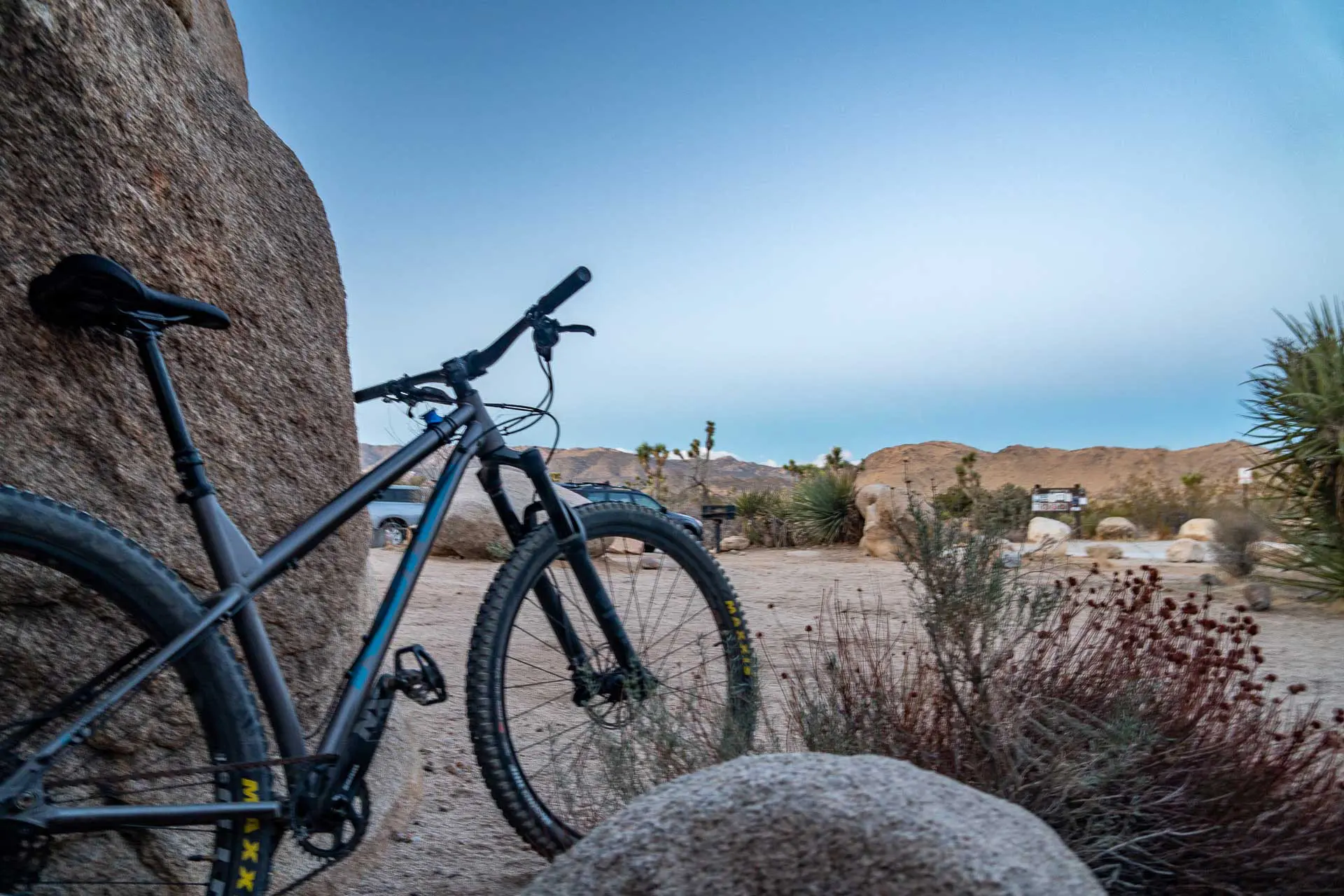The Tour Divide: One Month Out
I’ll be setting out to race the Tour Divide in just under a month.
Although I’ve previously ridden a bicycle across Australia and bikepacked the Arizona Trail, I’ve never quite set out to accomplish something like the Tour Divide. Not only will it be different from my two long cycling trips, but it will be significantly different from all my previous outdoor endeavors except for maybe my first 100-mile ultramarathon.
It wasn’t until January of this year – just five months before the start of the Tour Divide – that I decided in a hotel room in South Lake Tahoe that I wanted to stop training for an ultra I had signed up for in April and instead shift my focus to the Tour Divide. Why? Mostly because I was not the least excited about the ultra I had signed up for, and the prospect of racing the Tour Divide legitimately excited me.
Why spend the next four months training for something I’m not excited about when I can choose something that gets me way more amped? When framed this way, the choice was clear: race the Tour Divide – no matter how ill-prepared I may be.
So now, with less than thirty days until the Grand Depart in Banff, British Columbia, here’s where I’m at mentally and physically with my first-ever bikepacking race.

What’s Different This Time?
Arguably, the biggest difference between the Tour Divide and other long-distance trips I’ve done is the speed at which I hope to finish. How fast do I hope to do the Tour Divide? As fast as possible.
Never before has the clock been a factor for me. Sure, I’ve had deadlines in the past—whether because of travel plans or simply because of the amount of food I’m carrying—but never the self-imposed deadline of “as fast as possible.”
What does this mean? It means no zero days (at least no voluntary zero days) – arguably my favorite part of long-distance endeavors. It’s raining? Too bad, ride your bicycle. You’re tired? Too bad, ride your bicycle. Your hip hurts? Too bad, ride your bicycle. Sure, situations exist where a zero day might be forced, but I don’t imagine this likely.
Beyond zero days, every minute spent not moving forward on the bike is potentially time wasted. Things like filtering water, eating meals, adding or subtracting layers, and looking at the map for campsites should all, if possible, be done while riding.
One thing that can’t be done while riding (at least not by me, amateur bicycle rider)? Going to the bathroom. It may not seem like a big deal, but let’s say that you spend a total of ten minutes relieving yourself every day and that you are riding for four weeks. That’s over 4.5 hours of bathroom time. If you’re averaging just 10 mph / 16 km/h, that’s 45 mi / 72 km of missed riding – 1.6% of the total distance.
Now imagine all the other things you might take “just ten minutes” to do daily. Those 1.6% can add up quickly.
What Could Go Wrong?
What could go wrong? A lot.
I imagine many obstacles I’ll face on the Tour Divide will be things I’ve never had to cope with. These are mostly bicycle-related, but the fact that I’ll be attempting to complete the route as quickly as possible means that I will have to balance sleep and physical and mental fatigue.
Mental fatigue is one thing I’m particularly concerned about. Unlike backpacking, you can’t exactly check out mentally when you’re on a bike – especially when you’re on rough terrain. Even on a long and paved descent, you constantly need to scan the road ahead of you to be sure you’re not about to hit a pothole and get tossed over your handlebars.
I’m afraid I’ll go out too hard at the start of the route and burn myself out. I also fear not being able to balance sleeping and riding. Obviously, I’ll need to sleep. However, there’s a point at which sleeping an extra hour will benefit more than spending another hour on the bike. For example, it doesn’t make sense to sleep for four hours a night and average 7 mph / 11.3 km/h over a 16-hour day for a total of 112 mi / 180 km when sleeping an extra hour means I will be able to 10 mph / 16 km/h over a 15-hour day for a total of 150 mi / 241 km.
But where is that line? Hell, if I know.
Beyond that, there are plenty of things to fear on the Tour Divide – mud, insects, freezing temperatures, blazing temperatures, cars, crashing, and nighttime riding, to name a few – and many present me with novel challenges.
My goals for the Tour? In order of importance:
- Don’t die
- Don’t be seriously injured
- Don’t do any permanent damage to my body
- Finish
- Have fun?

Did I Train Enough?
The short answer? Probably not. It’s probably not crazy to imagine some people train for literal years to bikepack the Great Divide Mountain Bike Route – let alone race the Tour Divide.
That said, I’ve given what I feel comfortable calling “an honest effort” as far as training goes. Should I have done more overnight bicycle rides to prep? Maybe. But I already have my gear and camp systems dialed, so I’m not sure these overnight rides would have been worth the time spent away from other things (writing posts like this, for example).
I feel that I’ve spent enough time in my saddle that I’ve sufficiently prepped my butt for nearly a month of bicycle sitting. But I won’t know until I’m out there. Long-distance bikepacking is similar to thru-hiking in that the only truly effective way to ensure you’re 100% prepared to do the thing is to do the thing. I considered heading to Canada early and heading up to Jasper to ride the first section of the Great Divide Mountain Bike Route down to Banff as a warmup, but logistically, this didn’t end up being feasible.
One thing I have not done—but that I still have time to do—is educate myself in bicycle maintenance and repair.
Optimistic Outlook
My arbitrary goal is to complete the Tour Divide within 25 days. Why? Because that’s how quickly my friend wants to do it. Why? Because that’s how quickly our other friend wants to do it? Why? I have no idea.
That comes out to an average of 108 mi / 174 km a day. If I sleep six hours a night, spend an average of three hours per day not riding, and don’t take any zero days, I need an average riding speed of 7.2 mph / 11.6 km/h. Based on my training, this is not something terribly difficult to accomplish on any single ride.
However, this is before I account for how tired I will be, how much pain I will be in, the unforgiving weather I may encounter, and the potential for hike-a-bikes (which will severely damper my average moving speed). But the fact that I’m aware of these things now means that I’ll be able to effectively cope with them out on the Tour, right?
I’ve got this. It will be difficult, but I’m confident I’ll be able to complete the Tour Divide in a timeframe I can be proud of.
Pessimistic Outlook
I am prone to overestimating my abilities – or underestimating how difficult things will be – I’m still unsure if I do one more than the other or if it’s always a combination of the two. Over the years, I’ve tried to adjust my expectations. but it’s been difficult, as, with each successful trip or adventure, my self-expectation also gets a boost.
The Tour Divide is no different.
My 25-day goal – based on zero real personal data or past performance – is a pipe dream at best. There’s no way I will be able to maintain a 108 mi / 174 km a day pace – especially with the frequent temptation of town. Showers, beds, restaurants, and creature comforts will lure me into wasting time in town – or, at the very least, not riding. My back is going to hurt, my legs are going to hurt, the bugs are going to destroy me mentally, and I’ll probably have days of headwind that will have me crying on the side of the road, wishing for the nightmare to be over.
There’s zero chance I will be able to complete the Tour Divide in this arbitrary 25-day timeframe – even if, by some miracle, I don’t have any mechanical issues and escape the worst of the weather and the mud. This ride is going to break me physically and mentally; I’m going to have a terrible time.







I’m sure you’ll do great. I am looking forward to following your journey via dot-watching, insta pictures, and future blog posts. Enjoy !
Now I just have to cross my fingers that my calf and lower back will stop hurting before the start.
You’ve got this! Thanks for the glimpse into your mindset. As you well know, the mental game is the most critical part. It’s a beautiful route!
Thank you! Honestly, I’m most worried about the potential for mud…